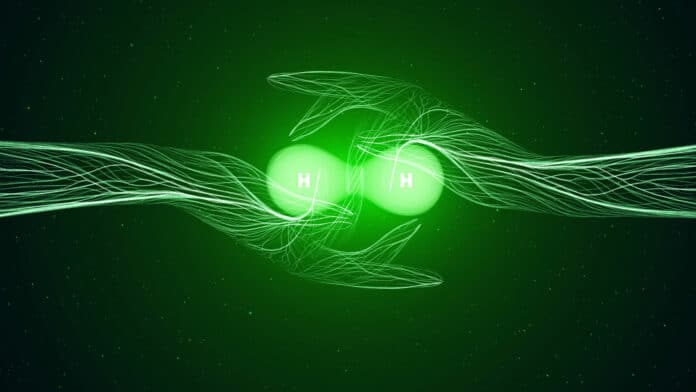Green hydrogen is widely viewed as an important fuel for a future energy transition that can help drive the decarbonization of entire industrial sectors and combat climate change in the process. Among many hydrogen production methods, eco-friendly and high purity of hydrogen can be obtained by water electrolysis.
Water splitting using proton exchange membrane water electrolyzers (PEMWEs) is considered a promising method for generating green hydrogen. But, the development of high-performance, long-lifetime PEM water electrolyzers is greatly impeded by the strong acid environment of PEMs. Only iridium-based electrocatalysts can be used as the element can withstand the harsh acidic conditions that occur during the reaction.
Currently, it is difficult for commercial iridium oxide catalysts to achieve high activity and stability at the same time in PEM water electrolysis.
Now, experts from the University of Adelaide have demonstrated lattice water-assisted short-range ordered iridium oxide as an oxygen evolution reaction (OER) electrocatalyst for highly stable acidic water oxidation. The team says the lattice-water-assisted mechanism – a way of arranging water molecules in a specific pattern – boosts the efficiency of an iridium oxide catalyst by 5-12% resulting in higher energy output while consuming less energy.
Researchers found that the lattice water-assisted modified OER mechanism exhibits no apparent degradation following 5700 hours (around 8 months) of testing in a three-electrode cell. Importantly, it maintains excellent activity following 600 hours of pure water PEMWE operation at 60°C with less iridium loading than a commercial membrane electrode assembly (MEA).
“With the lattice-water-assisted oxygen exchange mechanism that shows the possibility of both higher efficiency and stability in a proton exchange membrane water electrolyzer, the amount of iridium can be reduced, and the cost of producing green hydrogen can be efficiently decreased,” said the University of Adelaide’s Associate Professor Yao Zheng, ARC Future Fellow, School of Chemical Engineering.
“Our findings not only verify the viability of a low-loading iridium-based anodic catalyst for PEMWE but also provide new ideas for modifying the oxygen exchange mechanism for high-performance oxygen evolution reaction (OER) catalyst design. With cheaper green hydrogen, a carbon-neutral society could be built as soon as possible, and related climate problems could be efficiently decreased.”
Researchers conclude that lattice water–assisted oxygen exchange is, therefore, of practical benefit in the design of anodic electrocatalysts for high-performance PEMWE. Findings will be of interest to researchers and manufacturers in the design of equipment and applications.
Journal reference:
- Jun Xu, Huanyu Jin, Teng Lu, Junsheng Li, Yun Liu, Kenneth Davey, Yao Zheng, Shi-Zhang Qiao. IrOx·nH2O with lattice water–assisted oxygen exchange for high-performance proton exchange membrane water electrolyzers. Science Advances, 2023; DOI: 10.1126/sciadv.adh1718
